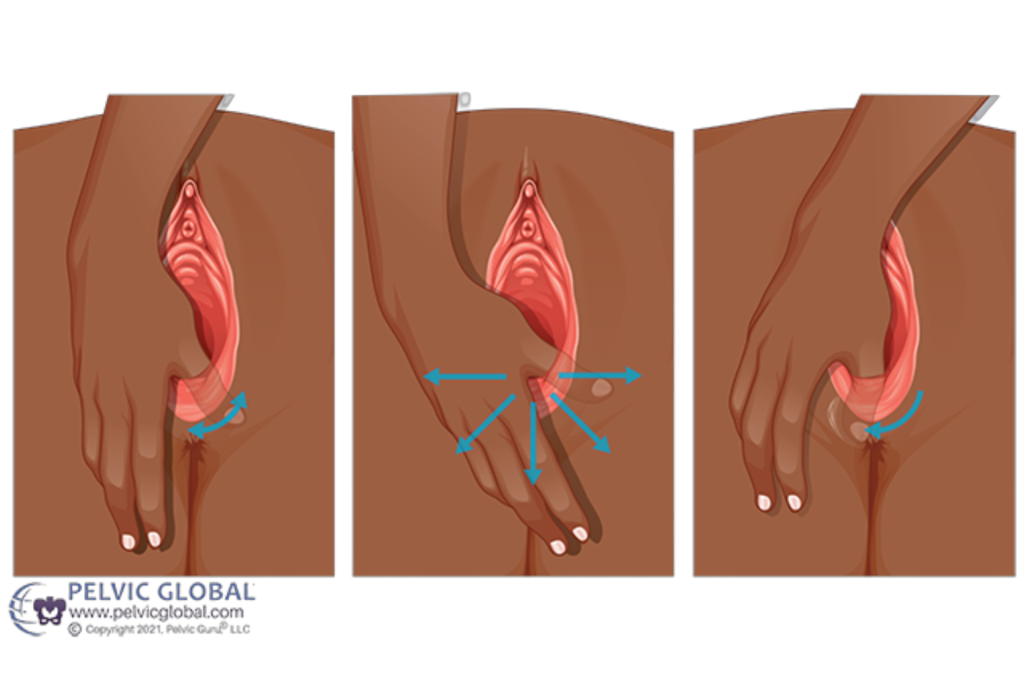How to Reduce Perineal Tearing During Labor

Giving birth is such a transformative and life-changing experience for so many women. I quite literally jump for joy when one of my patients or friends lets me know that they are expecting, and nearly 100% of the time, the first question they ask is “how can I prevent tearing?”
If you don’t know, perineal tearing refers to a tear or laceration in the perineum (tissue between the vaginal opening and the anus) that occurs during childbirth, and can lead to complications such as infection, prolonged healing, and bowel or bladder incontinence. Sounds fun right?
The idea of tearing near anywhere near your vaginal opening can sound painful and scary, especially if you are a new mom. But it is important to note that perineal tearing is actually a common occurrence during childbirth, with 80-90% of women experiencing some degree of tearing during vaginal delivery. However, there are several ways to reduce the severity of perineal tearing, and I want you to be aware of these options so you can discuss them with your OBGYN or midwife.
Method 1: Perineal Massage
One of the more common ways that you may have already heard of to reduce perineal tearing is through perineal massage. You may have also heard some conflicting information on whether the evidence supports it or not.
Perineal massage is a technique that involves gently massaging the perineum, the area of skin and muscle between the vaginal opening and the anus, in the weeks leading up to childbirth. I typically recommend starting perineal massage around 34-36 weeks. This technique is thought to stretch and soften the tissue, making it more pliable and less likely to tear during delivery.
Research studies have shown that performing perineal massage during pregnancy can be an effective way to reduce the risk of severe perineal tearing with severe tearing defined as grade 3 and grade 4 perineal tears in which the anal sphincter is involved.

Image used with permission from Pelvic Guru®, LLC www.pelvicglobal.com
To perform perineal massage, you can either enlist the help of your partner or you can perform on yourself. It can get somewhat tricky to perform on yourself as your bump gets bigger, so you will have to get creative in your positioning. Here is a helpful TikTok video I made demonstrating a few different positions.
You can perform perineal massage by inserting either your thumb or pointer finger into your vaginal opening to a depth of your first knuckle and then gently press downwards into the perineum. Think of your vaginal opening as a clock. Start first by pressing downwards to 6 o’clock and then work your way from 3 o’clock to 9 o’clock gently pressing at different parts of the clock. You can start by using a light touch, and gradually increase the pressure as you become more comfortable. Make sure to practice diaphragmatic breathing while performing perineal massage to relax your body and allow your pelvic floor muscles to stretch.
It is SUPER important to remember that if the thought or act of perineal massage makes you uncomfortable in any way, then it is NOT required.
Perineal massage is just a tool in a large toolbox of tearing reduction methods, so if it causes you discomfort or anxiety, then please do not perform and instead focus on some of the other methods listed below.
Method 2: Warm Compress
The application of a warm compress during pushing is another technique that can be used to reduce the risk of perineal tearing during labor and delivery.
Have you ever used a heating pad on your back to reduce low back pain or release any lower back tightness? Have you ever taken a warm shower and let the water hit your neck muscles to release a tension headache? This same idea of using warmth to release muscular tension applies to the pelvic floor muscles during labor!
Current research has shown that the use of a warm compress applied to the perineum during the second stage of labor both in between and during pushing can reduce the risk of grades 3 and 4 perineal tearing as well as the need for an episiotomy. It is thought to relax the perineal tissue and pelvic floor musculature, making it more pliable and less likely to tear.
To use a warm compress, you can either soak a clean washcloth or pad in warm water and have your partner, friend or provider place it on the perineum while pushing. Make sure you check the temperature of the compress before applying it to your perineum to ensure it is not too hot – you definitely don’t want an unwanted surprise!
If the use of a warm compress while pushing is not something you are up for or have access to, don’t worry, there are a few other ways to use the relaxing effects of warm water during your labor. A few options include: laboring in a warm shower and allowing the warm water to hit your lower back, apply a heating pad to your lower back or hip musculature (just make sure it is not near any liquid) and my personal favorite – laboring in a warm bath tub if your hospital or birth setting provides you with one. I spent the majority of my 16+ hour labor in our hospital’s bath.
Method 3: Positioning during Pushing and Delivery
Last, but not least – pushing position.
You all know that I could not write an entire blog post on perineal tearing without discussing the effects of various pushing positions on the perineum because the truth is…your pushing position can make a difference!
There is a ton of research out there about the effects of various pushing positions on perineal tearing, and while there is not one pushing position that is recommended as the best – there is one all researchers agree on avoiding. The lithotomy position.
The lithotomy position is when you are lying on your back with your hips and knees flexed and in stirrups. This is the classic position you will see for women delivering on TV shows and movies, but there are actually several negative consequences in delivering in the lithotomy position including:
- increased risk of forceps use
- increased risk of vacuum use
- increased episiotomy rate
- increased grades 3 and 4 perineal tearing
- increased nerve related injury
So what are some other pushing positions that are better for the perineum compared to the lithotomy position? The list below is NOT inclusive of every position, but it just provides a few.
- Standing upright (does have an increased chance of second degree tearing)
- Kneeling
- Semi-recumbent
- Sidelying
- Squatting (does have an increased chance of second degree tearing)
The most important thing to remember is you can labor and push in whatever position makes YOU feel most comfortable. Often providers may use coercion and their position in power to force you into a position that is easier for them rather than what is best for you. So if you are in a squat, stay in a squat!
Now getting into some of these positions requires a good bit of mobility in your hips, pelvic floor, and low back. Here are 5 daily movement to help prepare your body for labor and improve your mobility!
Remember this…
Perineal tearing is common during childbirth (especially in first time vaginal deliveries), but there ARE ways you can reduce the severity and risk. While many providers are up to date in their training and education, many are very set in their ways of delivering that are not necessarily what is best for your body. My goal with this post is to help educate you and inform you for your birth, not to scare you. I want you to feel empowered with the knowledge to speak up during your prenatal exams and definitely during your labor to get the help and care you deserve mama!
And if you do tear (which 80-90% of y’all will), it is incredibly important to focus on you and your recovery those early weeks postpartum. My Movement Through Early Postpartum teaches you how to prioritize your own recovery with guidelines on resting, early healing movement and signs that you might not be healing as effectively as possible. While everyone is focusing on baby, your healing can get lost in the shuffle, and that is exactly why I have created this resource – for you.
This literature been very useful for my lmidwifery practice.Thanks so much for sharing .